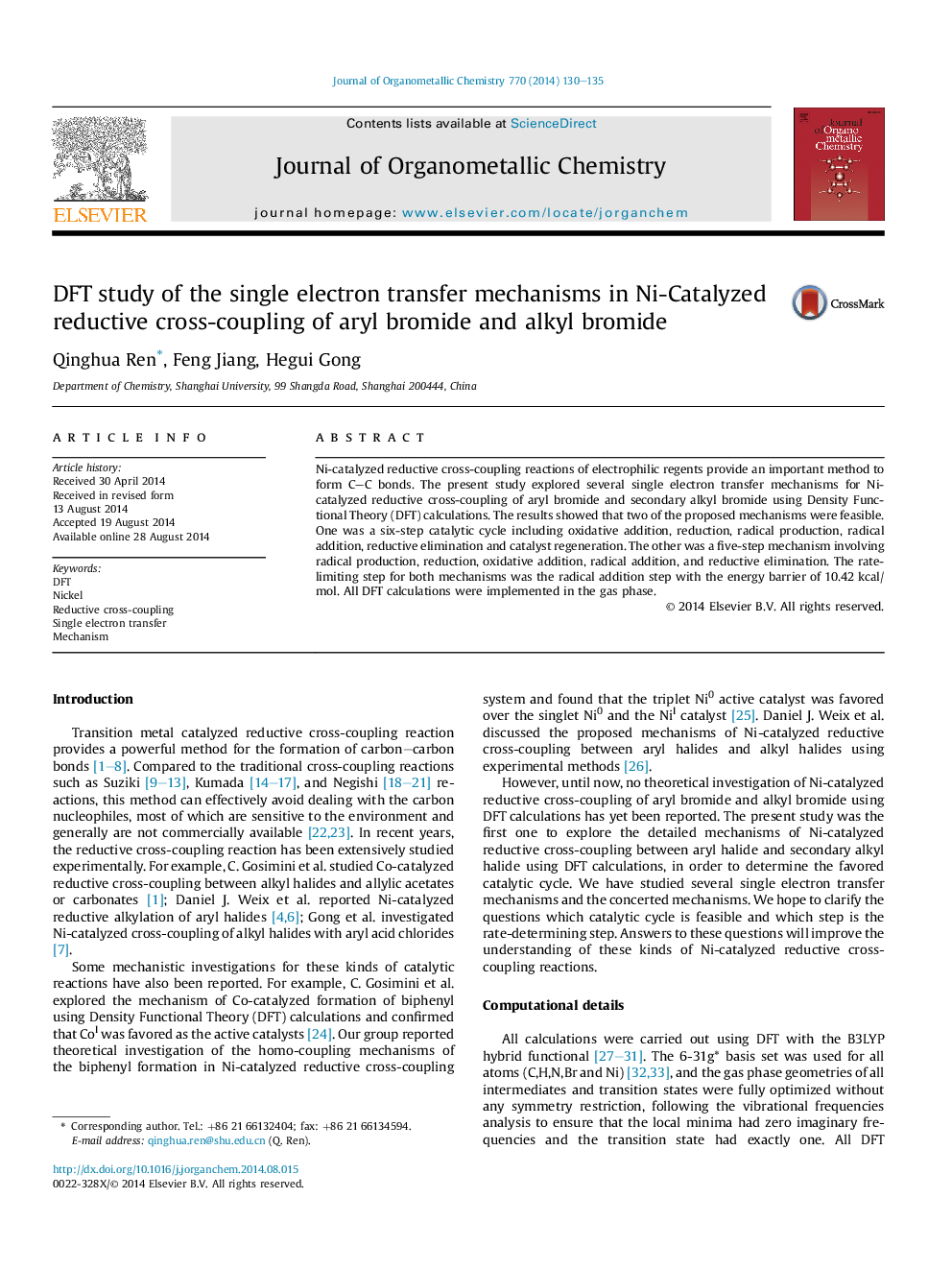| Article ID | Journal | Published Year | Pages | File Type |
|---|---|---|---|---|
| 1323656 | Journal of Organometallic Chemistry | 2014 | 6 Pages |
•We investigated mechanisms of the Ni-catalyzed reductive cross-coupling of aryl bromide and secondary alkyl bromide.•Two single electron transfer mechanisms are feasible.•The rate-limiting step is the radical addition step with the energy barrier of 10.42 kcal/mol.•We studied four possible single electron transfer mechanisms and two concerted mechanisms.
Ni-catalyzed reductive cross-coupling reactions of electrophilic regents provide an important method to form C–C bonds. The present study explored several single electron transfer mechanisms for Ni-catalyzed reductive cross-coupling of aryl bromide and secondary alkyl bromide using Density Functional Theory (DFT) calculations. The results showed that two of the proposed mechanisms were feasible. One was a six-step catalytic cycle including oxidative addition, reduction, radical production, radical addition, reductive elimination and catalyst regeneration. The other was a five-step mechanism involving radical production, reduction, oxidative addition, radical addition, and reductive elimination. The rate-limiting step for both mechanisms was the radical addition step with the energy barrier of 10.42 kcal/mol. All DFT calculations were implemented in the gas phase.
Graphical abstractFour of the proposed single electron transfer mechanisms in Ni-catalyzed reductive cross-coupling of aryl bromide and secondary alkyl bromide were studied using DFT calculations. The results showed that two of them were feasible in which the rate-limiting step was the radical addition step with the energy barrier of 10.42 kcal/mol.Figure optionsDownload full-size imageDownload as PowerPoint slide
